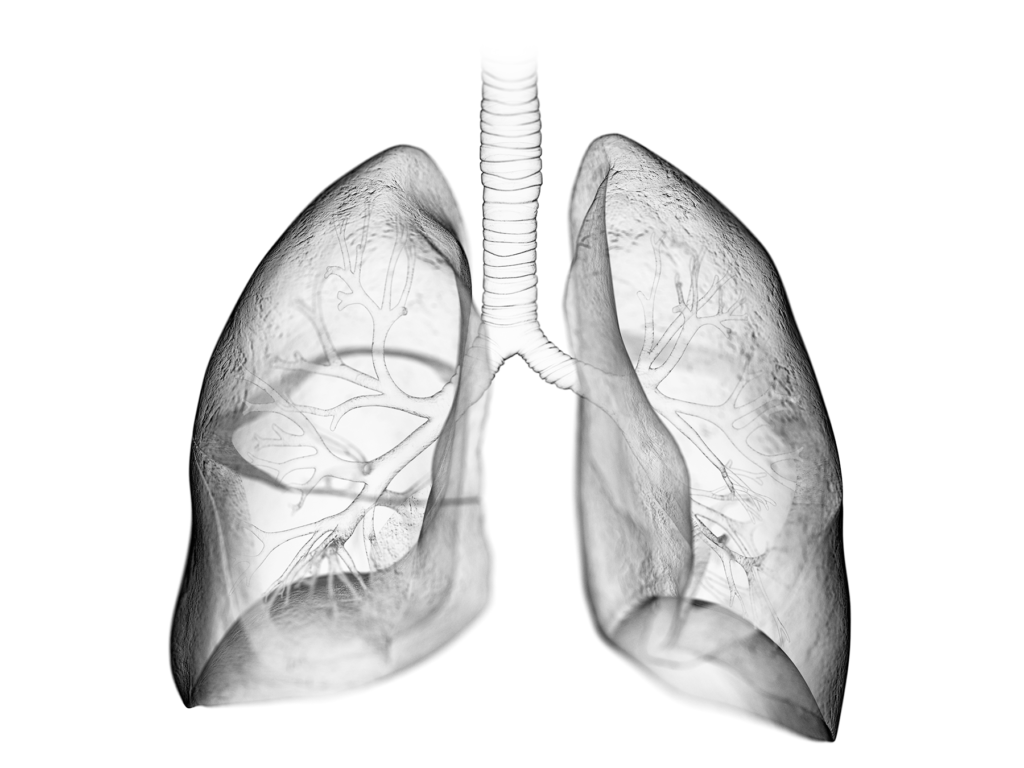Researchers evaluated three different mouse strains with varying sensitivity to radiation lung fibrosis in an effort to uncover the underlying mechanisms.

The Trending With Impact series highlights Aging publications (listed as “Aging (Albany NY)” by Medline/PubMed and “Aging-US” by Web of Science) that attract higher visibility among readers around the world online, in the news, and on social media—beyond normal readership levels. Look for future science news about the latest trending publications here, and at Aging-US.com.
—
Radiation is an effective treatment for many types of cancer. Unfortunately, this treatment has the potential to cause long-term side effects in some patients, including the thickening or scarring of lung tissue, known as pulmonary fibrosis. Radiation-induced pulmonary fibrosis (RIPF) is a serious complication that can occur after radiation therapy and can lead to death. Predicting an individual’s risk of developing RIPF remains challenging for clinicians, as little is known about the underlying mechanisms that cause it.
“Differential susceptibility to lung injury from radiation and other toxic insults across mouse strains is well described but poorly understood.”
Previous studies in mouse models have shown that there are natural variations in susceptibility to RIPF among different strains of mice. The mechanism(s) underlying this difference in susceptibility is still unknown. In a new study, researchers Eun Joo Chung, Seokjoo Kwon, Uma Shankavaram, Ayla O. White, Shaoli Das, and Deborah E. Citrin from the National Institutes of Health’s National Cancer Institute investigated differences in macrophage function across mouse strains and their potential contribution to varied RIPF susceptibility. On September 28, 2022, their research paper was published in Aging’s Volume 14, Issue 19, entitled, “Natural variation in macrophage polarization and function impact pneumocyte senescence and susceptibility to fibrosis.”
The Study
While the precise mechanisms underlying RIPF are not fully understood, it is thought that senescent pneumocytes (or alveolar cells) play a key role. Pneumocytes are a type of cell in the lung that are essential for gas exchange. Type II pneumocytes (AECII) function as alveolar stem cells after lung injury. The researchers hypothesized that macrophages (a type of white blood cell that play an important role in immune responses) may contribute to promoting AECII senescence.
“AECII are known to be in close contact with alveolar macrophages, and, in this fashion, to contribute to lung homeostasis [11].”
The researchers hypothesized that natural variations in macrophage function contribute to differences in RIPF susceptibility. To explore their hypothesis, they evaluated three different mouse strains with varying sensitivity to radiation lung fibrosis: C57L mice (RIPF-prone), C57BL6/J mice (intermediate) and C3H/HeN mice (RIPF-resistant). Female mice (to avoid sex-based differences in results) underwent thoracic irradiation (IR). Changes in macrophages and pneumocytes were assessed.
The Results
The team found that susceptibility to radiation-induced lung injury and premature AECII senescence varied by mouse strain. Pulmonary irradiation led to varied macrophage phenotypes and accumulation in each strain. In responses to polarizing stimuli, macrophages demonstrated strain-dependent responses. M2 macrophages induced AECII senescence via NOX2-derived superoxide production in a strain-dependent manner. Finally, macrophages expressing NOX2 accumulated in fibrotic lungs after radiation.
“NOX1 and NOX2 protein were expressed at the highest levels in C57L BMDM, with intermediate expression in C57BL6/J BMDM and the lowest expression in C3H/HeN BMDM (Figure 6B).”
The researchers demonstrated that the C57L mice (the strain with the greatest sensitivity to RIPF) exhibited the greatest rate of accumulation of senescent AECII cells. At the same time, they found that the fibrosis-sensitive (C57L and C57Bl6/J) mouse strains exhibit a greater accumulation of M2 polarized macrophages than the fibrosis-resistant strain (C3H/HeN).
“However, until now, the impact of M2 polarization on AECII senescence was unexplored. In this study, we identified that M2 macrophage polarization can contribute to AECII senescence, potentially leading to a positive feedback loop that furthers pulmonary injury.”
Conclusion
This study provides new insights into the role of macrophages in RIPF susceptibility. The findings suggest that natural variations in macrophage function contribute to differences in RIPF susceptibility. The different macrophage polarization profiles across strains may contribute to their varying susceptibilities to RIPF by promoting AECII senescence. These findings may help to develop new strategies for the prevention and treatment of RIPF.
“In this study, variation in the accumulation of senescent cells across strains with varying sensitivity to fibrosis has been established. Further, strain variation in macrophage response to polarizing stimuli and capacity to produce superoxide and induce senescence in epithelial cells is described. Together, these data highlight the importance of macrophage-epithelial interactions in the context of lung fibrosis and identify NOX2 as a possible therapeutic target in radiation lung injury.”
Click here to read the full research paper published by Aging.
AGING (AGING-US) VIDEOS: YouTube | LabTube | Aging-US.com
—
Aging is an open-access journal that publishes research papers bi-monthly in all fields of aging research. These papers are available at no cost to readers on Aging-us.com. Open-access journals have the power to benefit humanity from the inside out by rapidly disseminating information that may be freely shared with researchers, colleagues, family, and friends around the world.
For media inquiries, please contact [email protected].